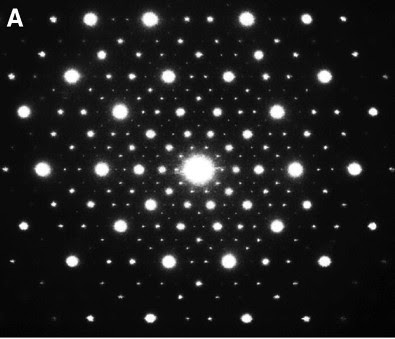 In 1988, on the way home from my first visit to the Alhambra, I noticed some interesting tiles in a coffee shop in the Madrid airport. The pattern on the wall appeared to be random meanderings, but there was only a single type of tile. That tile, the unit cell, had four lines on it, each the same thickness and each connecting with the edge at the same point, so that no matter how two adjacent tiles were placed the lines would appear to cross the edge into the adjacent tile. With the tiles arranged randomly, the effect was to produce meandering lines:
In 1988, on the way home from my first visit to the Alhambra, I noticed some interesting tiles in a coffee shop in the Madrid airport. The pattern on the wall appeared to be random meanderings, but there was only a single type of tile. That tile, the unit cell, had four lines on it, each the same thickness and each connecting with the edge at the same point, so that no matter how two adjacent tiles were placed the lines would appear to cross the edge into the adjacent tile. With the tiles arranged randomly, the effect was to produce meandering lines:
From time to time my thoughts have come back to this pattern. It poses many interesting questions. If all of the tiles have the same orientation, then the pattern is boring and the lines are infinitely long:

If the tiles are arranged randomly, then what is the expected distribution of lengths? Each line (like the two colored lines below), either forms a closed circuit or goes on forever. Would a plane tiled to infinity with randomly oriented Madrid tiles have any lines that go on forever? I don't know. On the one hand, the chances of every such line ultimately closing back on itself seems remote (How could every line be guaranteed to "find" itself?). But the alternative, that it would go on forever, also seems unlikely if you think about the how many such infinite lines there would be, and whether they would all lie in roughly the same orientation. Lines cannot cross, so all of them would have to run in the same direction, but the symmetry of the situation seems to make that unlikely (since any one line is equally likely to run up-to-down as left-to-right). I'm stymied. Does anyone know the answer to this?

I will be returning to these Madrid tiles again.





